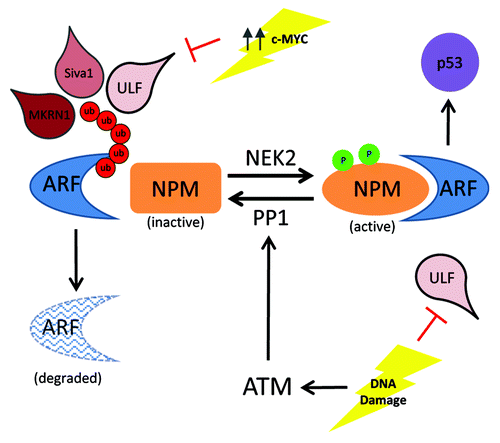Figures & data
Figure 1. Schematic of ARF protein stability upon oncogenic or genotoxic stress. High levels of c-MYC can prevent ULF-mediated ARF degradation. Upon DNA damage, ATM activates the phosphatase PP1 to dephosphorylate and inactivate NPM, allowing for ARF degradation. Upon ATM depletion, NEK2 can phosphorylate NPM, which increases binding to ARF, allowing subsequent p53 activation to prevent tumorigenesis. Ub, ubiquitination; p, phosphorylation.

